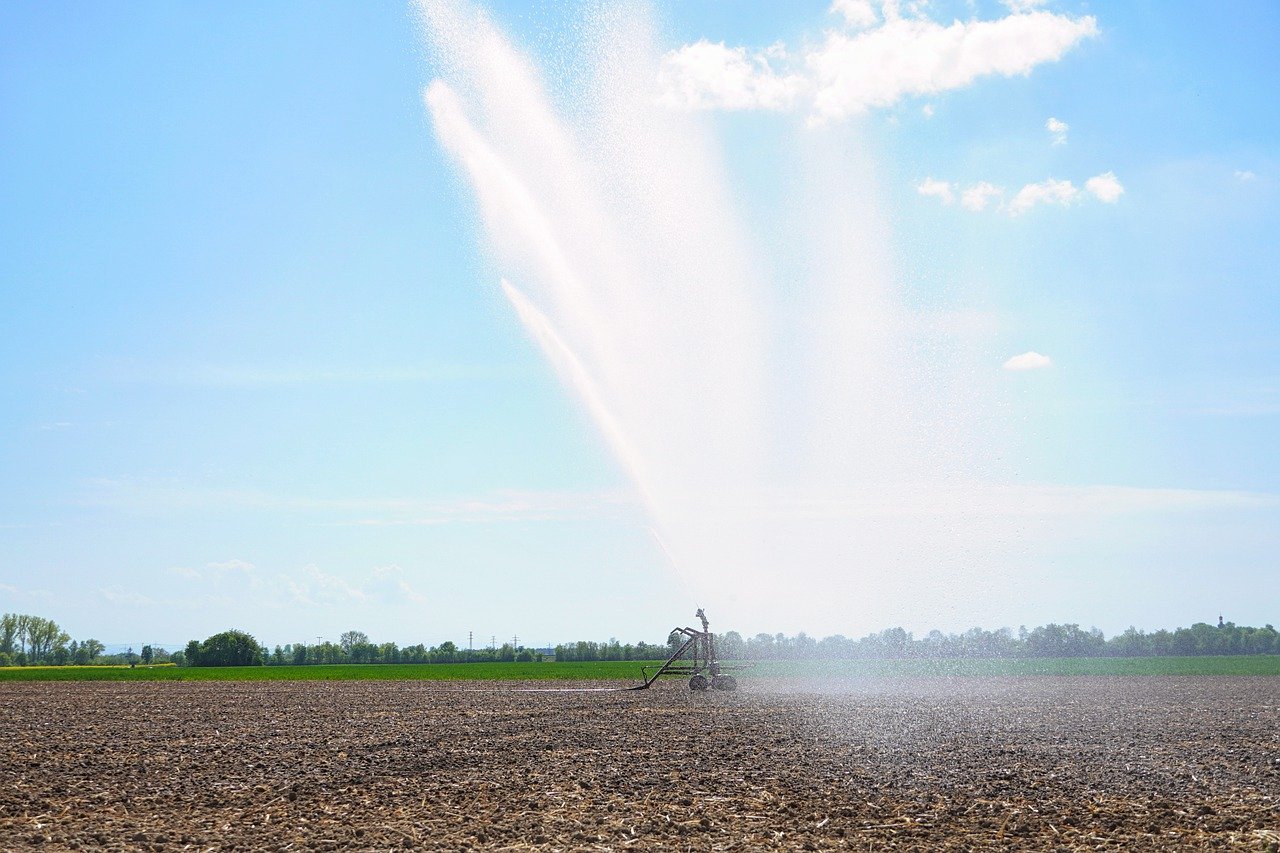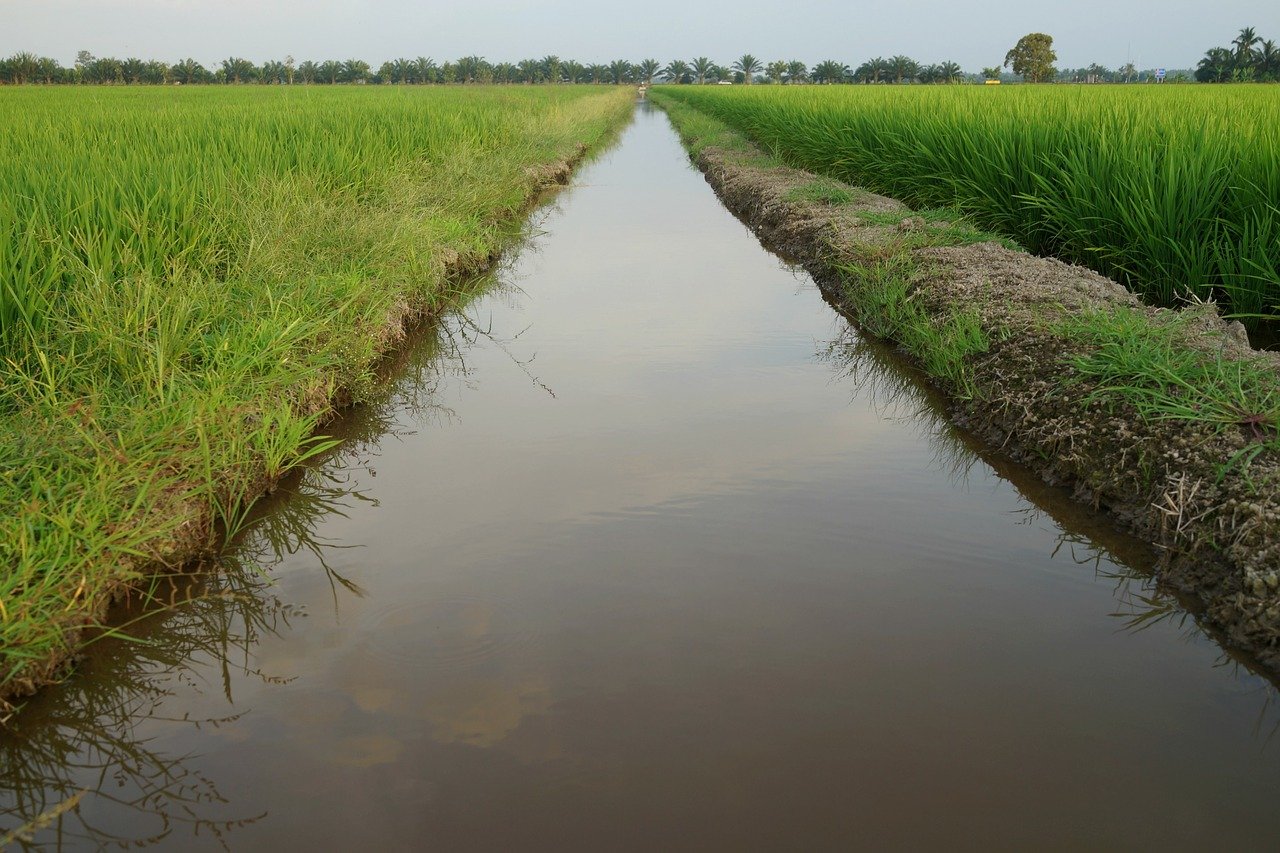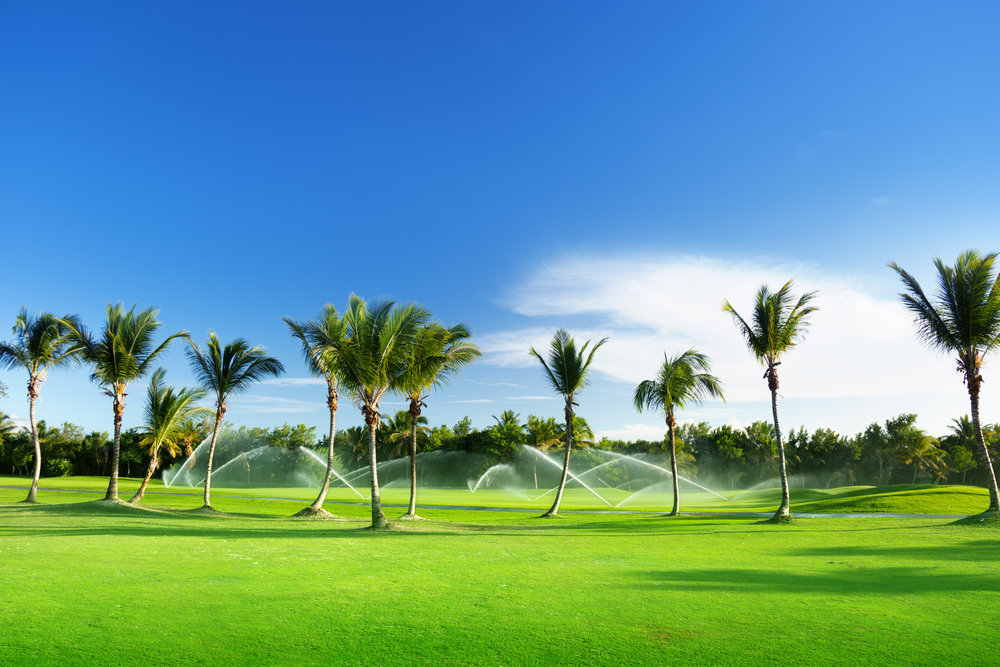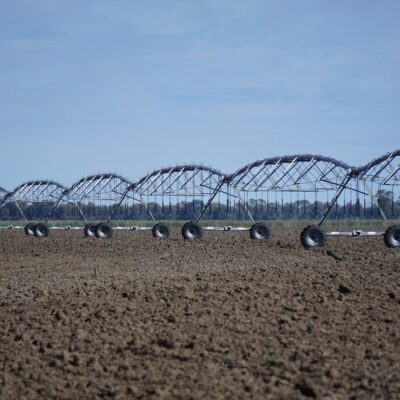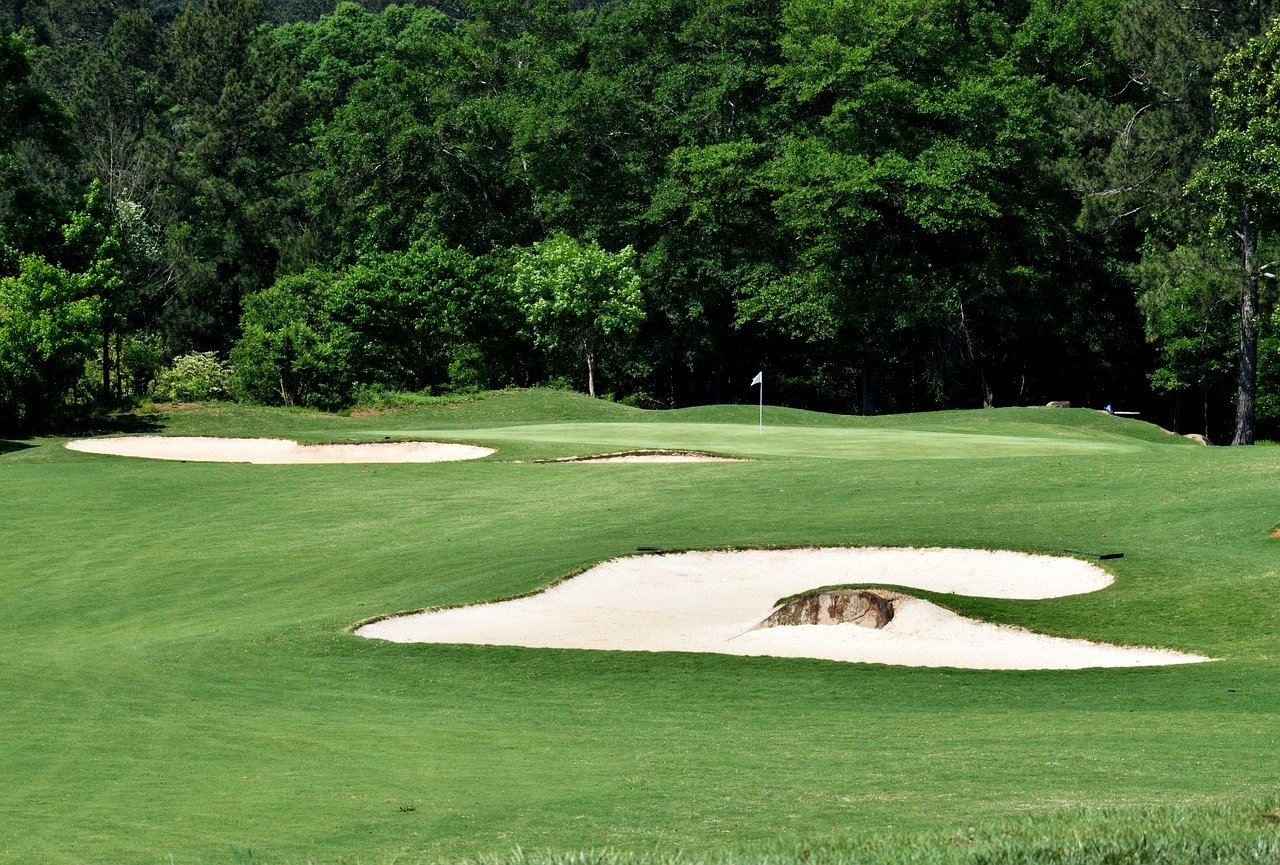What is irrigation? The general definition is that irrigation is the practice of artificially providing water for the land to help plants, crops and grass grow.
For agricultural irrigation, it takes into account the crop requirement throughout the "crop period," in order to satisfy the crop's total nourishment requirement.
The crop can be anything, including kinds of wheat and grasses, fruit and vegetables. All require water to thrive, and when that water isn't naturally available, it must be introduced by artificial means - in other words, through irrigation.
Irrigation can also be used to keep grass alive and healthy in gardens and sports fields or golf courses.
The first thing that springs to most people's minds when the word "irrigation" is mentioned is a connection with farming, so let's start there.
The Science of Irrigation in Farming
The earliest records of irrigation go back more than 8,000 years. The technique employed then forms an important basic of modern agricultural irrigation practice today.
Where it All Began
The first irrigation systems were developed around 6000 BC in Egypt and Mesopotamia; an area often referred to as "the cradle of civilisation." The name "Mesopotamia," means "the land between rivers," and in this instance, the rivers concerned were the Tigris and the Euphrates.
Today, this area of land is situated mostly in what we now call Iraq. Back through the mists of times, the inhabitants of this area of land were the Sumerians. They were the first people to invent writing, a system of government, and irrigation.
The Main Types of Irrigation
There are essentially two main kinds of irrigation - surface and sub-surface. Each of these types, in turn, breaking down into several different methods of irrigation. So, let's look at the different irrigation techniques.
Surface Irrigation
Surface irrigation involves water being applied to the land surface by using gravity and is the most common form of irrigation.
Flood Surface Irrigation
Also referred to as Inundation Irrigation, Flood Irrigation can be explained as an artificial method that floods the land on purpose. It saturates the soil, and the occasional rainfall that follows afterwards is enough to grow crops to maturity.
The Egyptians used water from the River Nile, which flooded for several months of the year. They recoursed its water to their fields, enabling them to cultivate crops that otherwise would have been impossible.
Around the same period, water from the Euphrates and Tigris was recoursed in Mesopotamia via the series of irrigation canals they dug, in what is thought of as the first ever engineering waterworks.
These are the earliest example of flood irrigation which is categorised as an uncontrolled irrigation system.
Lift Surface Irrigation
With lift irrigation, the water gets lifted via the use of mechanical interventions such as pumps, etc. Source water from wells and tube wells is transported to nourish crops at a higher level.
Sub-Surface Irrigation
Sub-surface irrigation is a method whereby the top surface of the soil isn't not made wet. Water is delivered underground in an action known as capillarity. This type of irrigation happens either naturally or artificially.
Natural Sub-Surface Irrigation Methodology
Natural sub-surface irrigation occurs in areas that lie close to water sources such as canals, lakes,, rivers or wells, whereby water leaches into the surrounding soil, nourishing crops naturally.
Artificial Sub-Surface Irrigation
At its most basic, this type of irrigation delivers water to the sub-soil through a system of pipes that have holes punched along their length. Water "leaks" through the holes, irrigating the root systems of nearby crops. The water can also supplement the level of underground water, helping to nourish the crops.
Flood Irrigation
Flood irrigation is still used today. The application that first springs to mind with most people would be the flooded paddy fields used to grow rice crops. There are other applications. Wherever the topography is both level and flat, flood irrigation can be used to water crops like small cereal-type grains, and hay.
Perennial Irrigation
Perennial irrigation is a variant of flood irrigation. It utilises water stored in dams and barrages and can therefore be used throughout the year.
Originally, perennial irrigation water was sourced via canals from ice-fed perennial rivers. The term “perennial” means present through all seasons of the year. Perennial irrigation requires the building of permanent hydraulic structures which are used to transport the water, often to a dam, where it can be stored and released throughout the year as and when necessary.
Direct Irrigation
Direct irrigation is a sub-variant of perennial irrigation. When irrigation water is sourced by diverting river runoff to a canal by the building of a diversion weir, this type of irrigation is referred to as direct irrigation.
If, however, a dam is built across the river to store the water, it is referred to as storage irrigation.
Direct irrigation is the most basic and economical form of controlled or perennial irrigation.
Basin and Border Irrigation
Flood irrigation is also known as Basin and Border Irrigation. Essentially, flat land is surrounded by banks of earth to block the escape of water. Basin irrigation is usually used to grow tree crops, with each basin being proportionate to the size of the tree.
With Border Irrigation, the irrigated land is sub-divided up into rectangular basins. The water level can be controlled to overfill and run off into the next bay.
Basin irrigation can be quite a scientific application, with farmers using laser levelling and ground grading. Australian farmers use a "Drain Back Level Basin Irrigation System" to control the water flow, and using this methodology, they rotate rice and wheat crops.
Furrow and Surge Irrigation
Another variant of flood irritation is furrow irrigation. This is when flood water is kept confined within furrows. The crops get planted on the top of the ridges.
These irrigation methods are used for growing crops such as cotton, maise, and sugar cane, and is also sometimes employed in citrus and stone fruit orchards, vineyards, and some tomato farming.
Another form of furrow irrigation is surge irrigation. This is where the water supply is pulsed on and off.
Surface Irrigation in action Today
Surface Irrigation is a common form of irrigation employed today, by farmers, homeowners, and facilities like golf courses and parks.
Here are the various methods of irrigation most commonly used
Sprinkler Irrigation
Sprinkler irrigation can be employed to deliver water to crops in almost any size, shape or gradient of field. These systems are used in agriculture in four basic ways.
The Hand Move Pipe System
With this variant, a sprinkler is affixed to the end of an aluminium of PVC pipe. Pipe length is typically 30 or 40 feet. Each pipe stands vertically, and they are usually installed in a line about forty feet from each other. Because of this, they are known as laterals.
Hand move sprinkler systems are cheaper to install and easier to maintain than other types of sprinkler systems. However, they are more labour-intensive.
The Solid Set Sprinkler System
A Solid Set system is a system whereby a PVC pipe is permanently installed in the ground. Vertical risers are attached, each with a sprinkler unit at the top. The distance between each riser can vary from 40 to more than 100 feet. This distance is determined by the type and size of the sprinkler unit.
Centre Pivot Irrigation Systems
They have horizontal tubular arms, along which sprinkler units are installed. The arm is fixed to a central pivot, so it rotates horizontally on its axis, thus distributing water in a circular arc.
These systems can be manufactured to order according to the size of the field or the area the irrigation is to cover. Early models were water-powered, but Today's units are powered using electric motors.
Hose Reel or Travelling Gun Irrigation Systems
These types of systems have one big sprinkler unit attached to a hose and mounted on a cart. A tractor is used to pull the mobile system around the field, unreeling the hose as it goes and delivering water to the crops.
Micro Irrigation
The types of irrigation we have discussed so far are all quite wasteful as far as incidental water loss is concerned – even sprinkler irrigation. But although sprinkler irrigation is much more efficient in terms of water waste than surface, flood irrigation it is still quite wasteful as much of the water is lost through evaporation and evapotranspiration. Micro irrigation was designed to eliminate this type of water loss even further.
Micro irrigation is a generic term. It is more readily identified by the term drip irrigation.
Drip Irrigation
Drip irrigation delivers water to the crops, according to how much water a particular crop requires. It is the most popular irrigation system in the world, especially in arid regions where water conservations and efficiency are particularly important.
It delivers water straight to the crop's root zone at the right time and in the right quantity, thus facilitating improved crop yields, at the same time conserving energy, fertiliser, and water.
Water and nutrients are distributed across the growing area by small diameter pipes with precision-engineered drip points distributed along their length. Each dripper delivers water or water plus nutrients etc. evenly along the entire length, promoting higher quality, higher quantity crops.
Drip irrigation can be tailored to the task, be it the irrigation of a whole field or several fields of crops, or a home garden.
Trickle Irrigation
Trickle irrigation is another name for drip irrigation. The terms are exchangeable, although “trickle” tend to be used an expression more in the USA. In fact the Marketwatch.com website recently published a report entitled, “Trickle Irrigation System Market Share, Size, Financial Summaries Analysis from 2023 to 2029,” which includes sections on how both the COVD-19 pandemic and the Russian invasion of Ukraine impact on the global Trickle Irrigation system industry.
The Home Gardener and Drip Irrigation
Drip irrigation is by far the best method of irrigating plants in a home garden. It is relatively cheap, but even so, gardeners will still recover much of the initial outlay in years to come through of reduced water bills. The principles of drip irrigation for the garden are much the same as those for farming although on a much smaller scale of course.
Porous Pipe
There is another possibility for the home gardener which deserves an airing, and that is something called porous pipe irrigation.
Porous pipe is totally porous all along its entire length. This means that water can seep through exactly where it is needed, following careful placement of the piping. Installation-wise, it can be laid on the surface of the soil, or below any mulch, or just beneath the earth.
Bearing in mind that the object of the exercise is to deliver irrigation water to the plant's root systems, these placements, especially the sub-soil option, are perfect. Whereas surface drip feeding or just above the surface already minimises irrigation water wastage through evaporation, sub-soil placement rules it out entirely, making it the best possible solution.
A porous tube irrigation system is ideal. It delivers a gentle and precise amount of life-giving irrigation water for raised bed areas, fruit and veggie plots (including allotments), cloches, and greenhouses. It also has the advantage that it is incredibly easy to install.
Localised Irrigation
Localised irrigation is a blanket term that uses various types of systems to deliver exact amounts of irrigation water directly to where the plant is growing, minimising water loss and wastage through evapotranspiration.
The type of systems that fall into the localised irrigation category include:
- Perforated plastic sleeves
- Porous pipes
- Porous pots
As well as delivering exact amounts of water, localised irrigation systems are also used for fertigation – the right amount of fertiliser along with right amount of irrigation water – hence the term “fertigation” – a blending of the words “fertiliser” and “irrigation.”
Golf Course Irrigation
When it comes to the irrigation of golf courses, it goes without saying that flood irrigation would be totally inappropriate. But so too is drip irrigation, which is designed for targeting restricted areas.
Golf club greens and fairways are large expanses of grass, so drip irrigation is out of the question. It has to be surface, sprinkler driven irrigation.
The exact and individual nature of golf courses means a unique set of designs on a course-by-course basis. It doesn't matter if we are talking 9 holes, or 18.
The land area involved is considerable and will probably include gradients. Then, of course, there are the various elements of that land and the use to which it is put - fairways, greens and tees.
Each element will probably have its own characteristics and watering needs. To be successful. an appropriate irrigation system must deliver plentiful watering and in order to will require:
- Ongoing maintenance
- Ground/Greenkeeper management.
The actual sprinkler irrigating system design will require, and have to take into account:
- Its own unique irrigation needs
- Careful placement of emitters (using Valve in Head Rotors)
- Isolation or shut-off valves
- Source of water
- Main/Lateral line pipework
- Positioning of spot elevations (Where terrain varies)
- Pipe sizing
- Flow zone layout
- Designs troubleshooting
Even here in England, where we always seem to get more than our fair share of rain, it's impossible to predict long term when it will rain and how heavy the downpour will be. We just cannot leave it up to Mother Nature to do the job.
Tailoring the Software
The only way of stopping the grass from wilting and losing its rigidity is by timely irrigation. But the key here is control. That is why it is so important to design the irrigation system properly, position the sprinklers in the optimum positions, and most importantly of all, have the right software with a user-friendly interface to manage the watering down to the last drop.
When all is said and done, the irrigation system you put in place as just as important in terms of golf course maintenance, as the mowers you use to cut the fairways, greens, and tees.
References:
https://theconstructor.org/water-resources/irrigation-definition-types/37463/
https://www.easy-irrigation.co.uk/a-history-of-agricultural-page-29?zenid=hf1oalfqm89bq70nkli7vv9oc6
Flood and Furrow Irrigation | World Agriculture (agrotechnomarket.com)
What is Surface Irrigation? How Does It Work, Types - Civil Engineering (civiltoday.com)
6 Types of irrigation System used in Agriculture Worldwide (farmpractices.com)
https://www.netafimuk.com/drip-irrigation/
https://www.landfx.com/docs/irrigation/system-techniques/item/2218-golf-course.html

